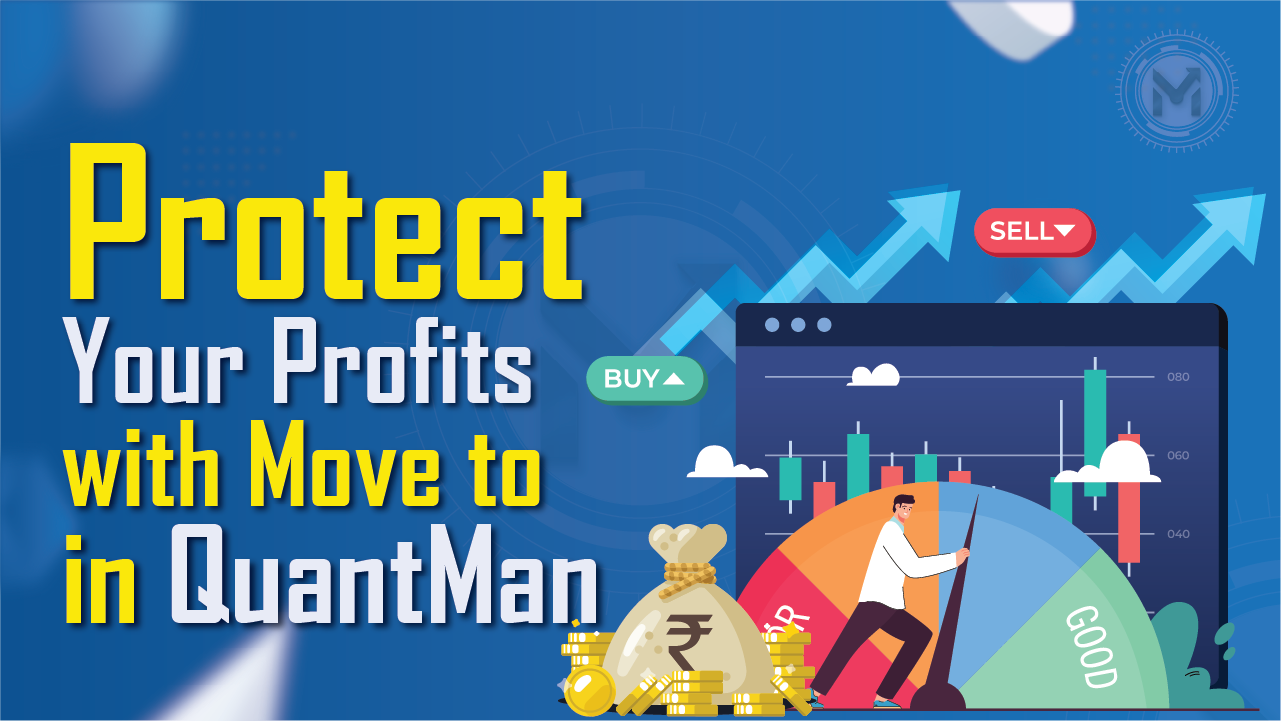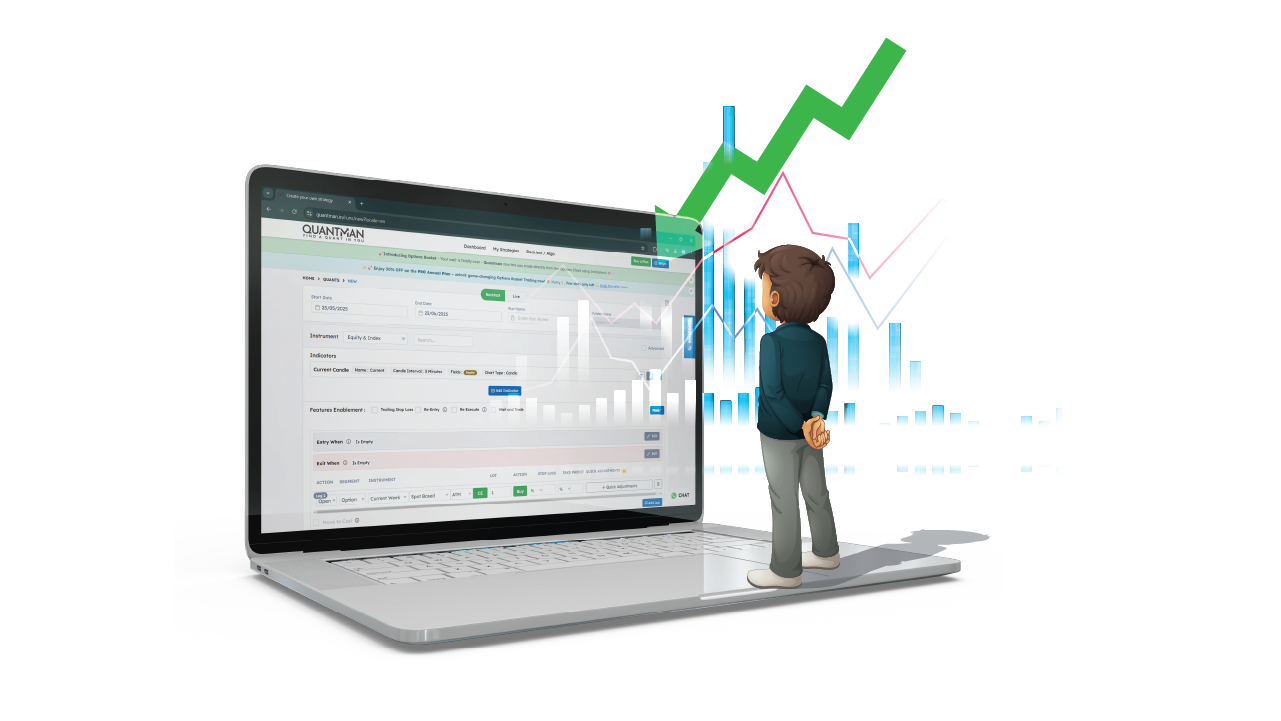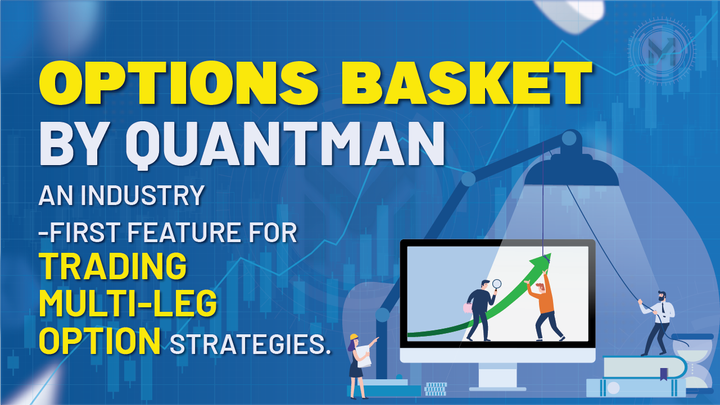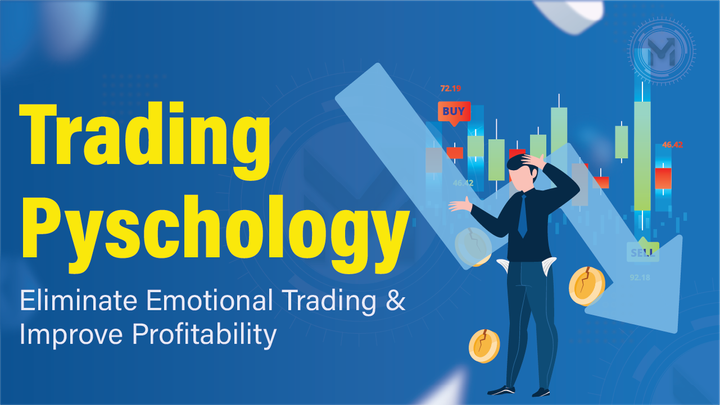Protect Your Profits with Move to Cost in QuantMan
This blog will illustrate what is move to cost in QuantMan and how it helps traders lock in profits, eliminate risk after a certain point, and trade more confidently with automation.

Imagine you’ve made a smart trade. The price moves in your favor, and you’re sitting on a nice unrealized profit. But before you can enjoy the success, the market changes, and you're back to zero or worse, at a loss. This is one of the most common and frustrating problems traders face. The good news? There's a smart solution to this. It’s called Move to Cost, a feature built into the QuantMan platform that helps you lock in your capital once your trade reaches a safe zone.
Whether you're trading options, futures, or equities, understanding how Move to Cost works can help you reduce stress, protect your account, and build a strategy that lasts.
Understanding Move to Cost: What It Really Means
Move to Cost is not just a technical feature, it’s a psychological safety net. Here’s how it works: once your trade earns a certain level of profit, QuantMan automatically moves your stop-loss to match your entry price. That means, from that point on, you’re not risking any capital.
If the trade continues to move in your favor, great, you ride the wave. If the market pulls back, you exit safely at your original price, without any loss. It’s like putting your winnings in your pocket while still staying in the game.
How to Activate Move to Cost in QuantMan

Setting up Move to Cost in QuantMan takes just a few steps:
- Log into your QuantMan account.
- Connect your broker if you haven’t already.
- Head to the Strategy Builder.
- Design your strategy based on your logic.
- In the Adjustments section, turn on Move to Cost and set your profit trigger (e.g. when the trade gains ₹50).
Once the trade reaches your defined profit, QuantMan will handle the rest. It will move the stop loss automatically without manual updates or second-guessing.
An Example of How Move to Cost Protects Your Trade
Let’s say you enter a trade at ₹180 with an initial stop-loss at ₹160, risking ₹20. You configure Move to Cost to activate once the trade reaches ₹220 (a ₹40 profit).
Here’s what happens:
- As soon as the price touches ₹220, your stop-loss shifts to ₹180 (your entry).
- Now, no matter what happens, you won’t lose money.
- If the price moves to ₹250, you gain more.
- If it drops to ₹180, the trade closes at break-even.
With Move to Cost, you remove the fear of turning winners into losers.
Why Every Trader Should Use Move to Cost
1. Reduces Risk Without Cutting Profits
With Move to Cost, you no longer need to worry about giving back your hard-earned gains. Once your trade reaches a profit target, your capital is protected, allowing you to remain in the trade without stress. You get the best of both worlds: risk management that yields reduced risk and the potential for more upside.
2. No More Emotional Decisions
Emotions can ruin even the best strategies. When you manually shift stop-losses based on fear or excitement, you’re no longer following logic. Move to Cost removes emotion completely by automating the decision once your condition is met.
3. Works Best in Volatile Markets
Markets can change direction in seconds, especially during news events or expiration days. Move to Cost acts like a built-in safeguard. It locks in your base capital when things are going well, so sudden reversals don’t wipe out your gains.
4. Supports Disciplined Trading
Discipline is one of the biggest challenges for traders. Move to Cost helps you stay consistent by sticking to predefined exit logic. It ensures that your strategy functions as intended without second-guessing or violating rules.
5. Fully Hands-Free Execution
Once configured in QuantMan, Move to Cost works without manual monitoring. This is a huge plus for traders who can't watch the screen all day. It allows your strategy to manage itself, even while you're busy with other tasks.
Tips to Get the Best Out of Move to Cost
- Don’t Set the Trigger Too Soon
It’s tempting to move your stop-loss to cost after a small profit, like 5 or 10 points. But this can work against you. Minor pullbacks might cause you to close your position too early, even if the trade had more potential for growth. Set a trigger that gives your trade some breathing space.
- Backtest Your Strategy
QuantMan’s backtesting feature lets you experiment safely. Try different profit trigger levels across instruments like Nifty, BankNifty, or FinNifty. You might find that 25 points is enough for Nifty, while BankNifty performs better with a 50-point trigger. Backtesting removes the guesswork.
- Adjust for Instrument Volatility
Don’t use the same Move to Cost settings across all instruments. High-volatility indices may need wider triggers, while low-volatility ones may work with tighter ones. Tailoring your setup for each instrument improves both safety and profitability.
- Combine with Trailing Stop-Loss for More Power
Move to Cost is great for removing risk, but when paired with a trailing stop-loss, it becomes even more powerful. First, you lock in safety with Move to Cost. Then, you capture more profit using a trailing stop as the trade climbs further.
Final Thoughts: Let Your Strategy Work Smarter, Not Harder
Trading successfully is not only about choosing the right direction, but also about safeguarding your profits. With the Move to Cost feature in QuantMan, you're adding a layer of safety that most manual traders overlook.
If you're building algo strategies or just want to remove emotions from your trades, this is a must-use feature. It’s simple, powerful, and built to help you win more by losing less. Give it a try in your next strategy, and let your trades take care of themselves.
Here is a video guide on what the move to cost feature in QuantMan is and how it benefits traders. Be sure to check it out.



